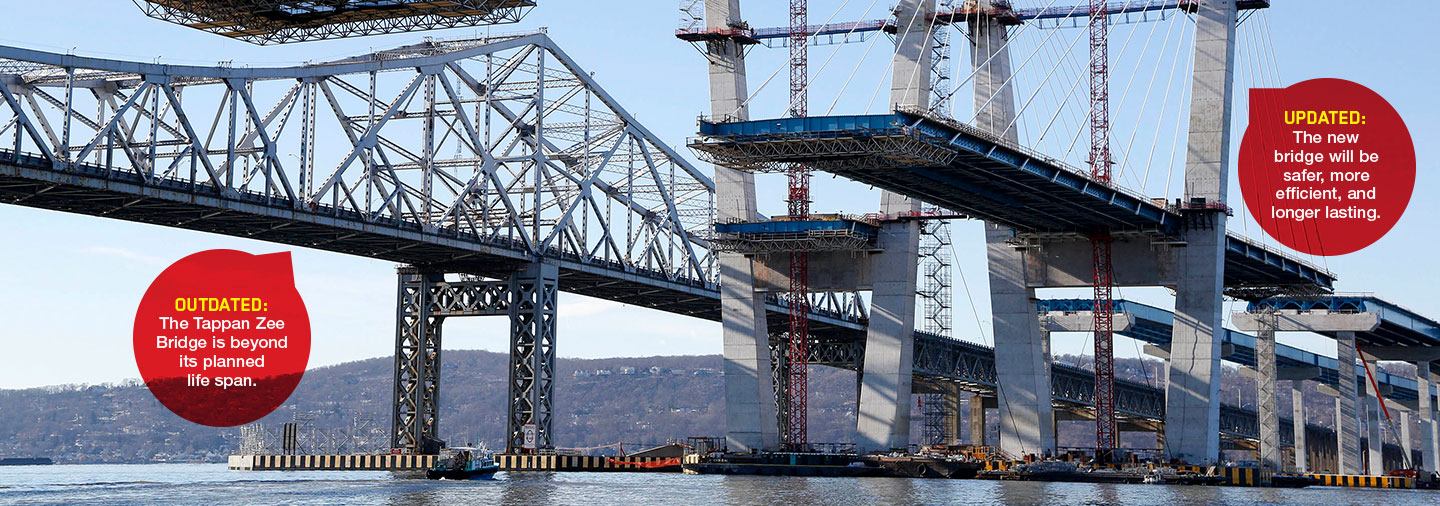Just north of New York City, a massive construction project is under way—the first major bridge built in New York State in 50 years. Last June, I visited the site to check on its progress. From a tiny boat on the Hudson River, I watched as workers climbed up the bridge’s massive towers—each taller than the Statue of Liberty—and bolted huge steel girders into place.
For the past four years, builders have worked around the clock to complete the bridge. This fall, the first half of the bridge opened to the public. When it’s finished, two side-by-side roadways will stretch 5 kilometers (3.1 miles) over the river. Together, they will carry nearly 140,000 vehicles per day, helping everyone from commuters to truck drivers get to their destinations in one of the busiest regions in the country.
A massive construction project is under way just north of New York City. It’s the first major bridge built in New York State in 50 years. Last June, I visited the site to see how it was going. I watched from a tiny boat on the Hudson River. Workers climbed up the bridge’s massive towers, each taller than the Statue of Liberty. Then they bolted huge steel girders into place.
Builders have worked on the bridge around the clock for the past four years. This fall, the first half of the bridge opened to the public. When it’s finished, the bridge will have two roadways, side by side. They’ll stretch 5 kilometers (3.1 miles) over the river. Together, they’ll carry nearly 140,000 vehicles per day. Everyone from commuters to truck drivers will use the bridge. It will help people reach their destinations in one of the busiest areas in the country.

